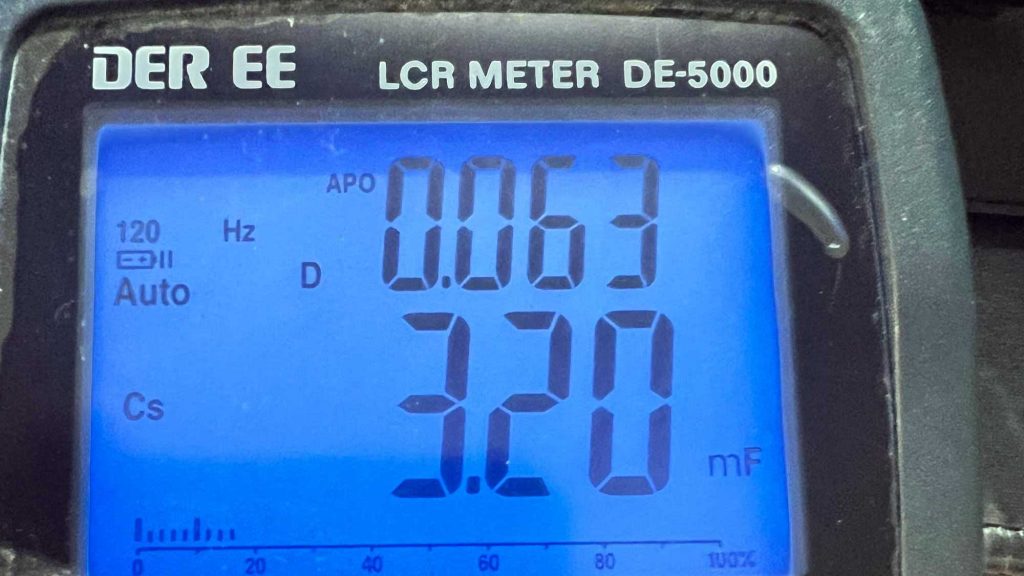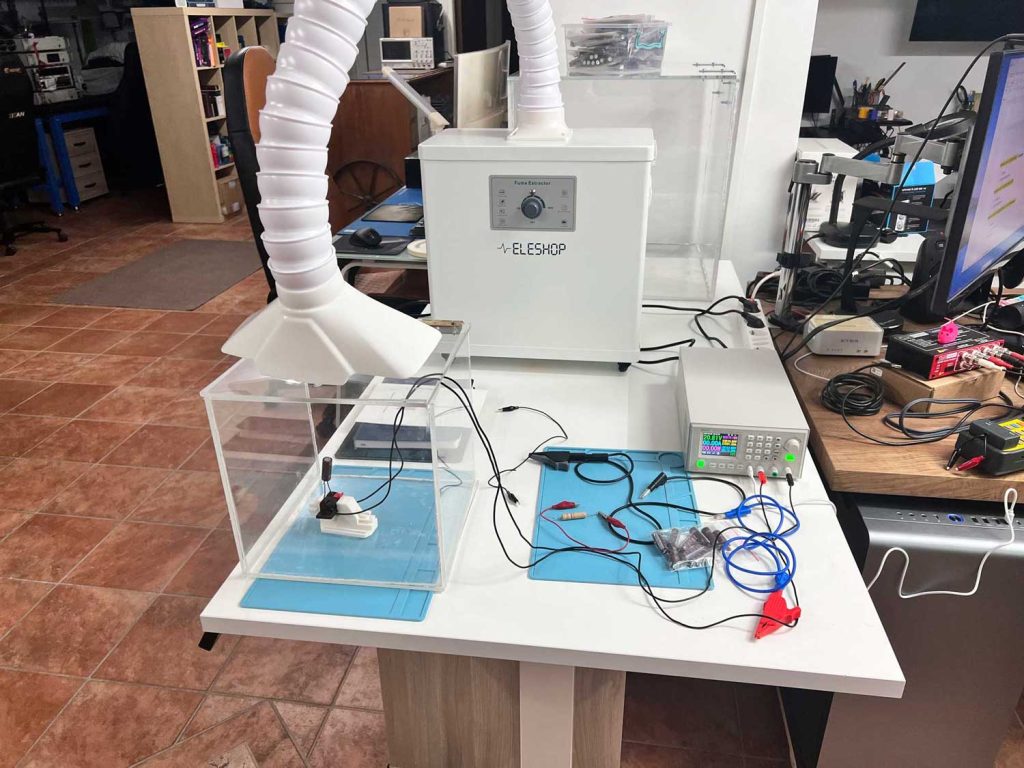Methodology
My methodology is simple but effective. It doesn’t require much time for each testing session, allowing me to proceed quickly with the samples I have in hand.
The first thing I do is the voltage treatment process, where I connect a resistor in series to the capacitor and apply its maximum rated voltage for a 30-minute period. This process brings the capacitor to its best form and prepares it for the following tests.
Right after the voltage treatment process, I measure the capacitor’s capacity at 120 Hz, using a DER EE LCR Meter DE-1000 instrument. This is an inexpensive but reliable and accurate enough instrument. Note that I measure all caps at the same frequency (120 Hz) for comparable results.
After the capacity measurements, it is time for the real tests. I start overvolting the capacitor with 20% steps for five-minute periods while trying to keep an ambient temperature of 25C (+-2). I wrote a special application for this purpose, so I don’t have to supervise the whole procedure. Testing stops
16V Max Rated Capacitor Testing Plan.
- 16V – 30 Minutes (Voltage Treatment)
- Capacitance measurement
- 19.2V – 5 Minutes
- 22.4V – 5 Minutes
- 25.6V – 5 Minutes
- 28.8V – 5 Minutes
- 32V – 5 Minutes
- 35.2V – 5 Minutes
Starting from the 120% voltage rating, we measure the time the cap stays alive. By comparing each capacitor’s operational time, I can easily determine the best and by what degree!




